

Flint Hills
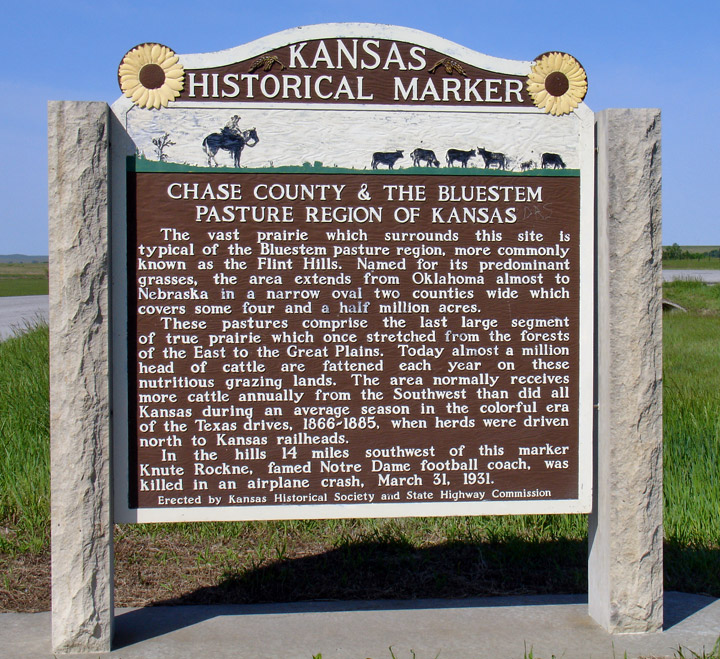
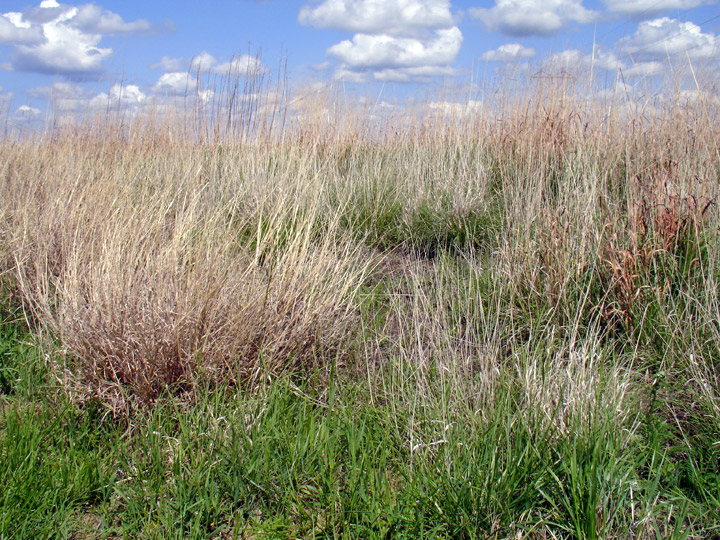
tallgrass
The same forces that shaped the North
American tallgrass prairie for millennia—fire and grazing—are the key to its
survival.
Stretching in a narrow band across east Kansas and dipping into northeast
Oklahoma, the tallgrass prairie rolls in gentle waves over the Flint Hills.
Waist-high grasses blanket the plains, studded with spring and summer
wildflowers and sheltering nests of grassland birds such as the greater prairie
chicken.

area of the flint hills
In 1806, during his western explorations, Lieutenant Zebulon Pike named the region for the flinty rock underlying the grasslands. From 1821 until 1870, people traveled through the Flint Hills on the Santa Fe Trail, the major trade and migration route from the East to the Southwest. In places, the trail’s granite markers and wagon wheel ruts are still evident.
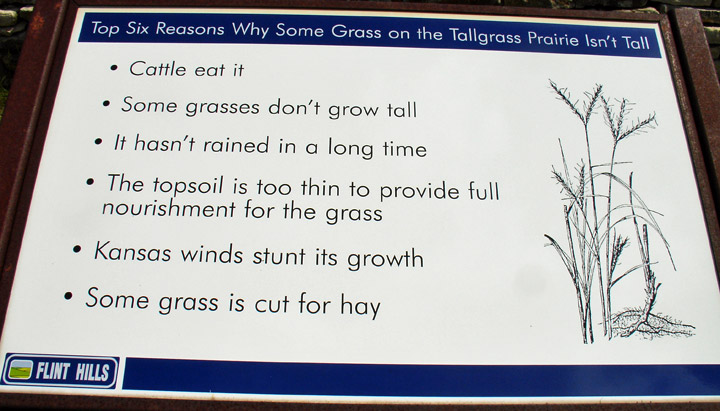
The tallgrass prairie evolved under the influence of herds of elk and bison,
whose selective grazing and hooves “tilled” the plains and made way for diverse
grasses. Fire burned the plains, ignited by lightning and the Kansa and Osage
tribes, and fire-tolerant grasses thrived in its wake. More than a century ago,
when it once blanketed much of Kansas, the tallgrass was Willa Cather’s muse.
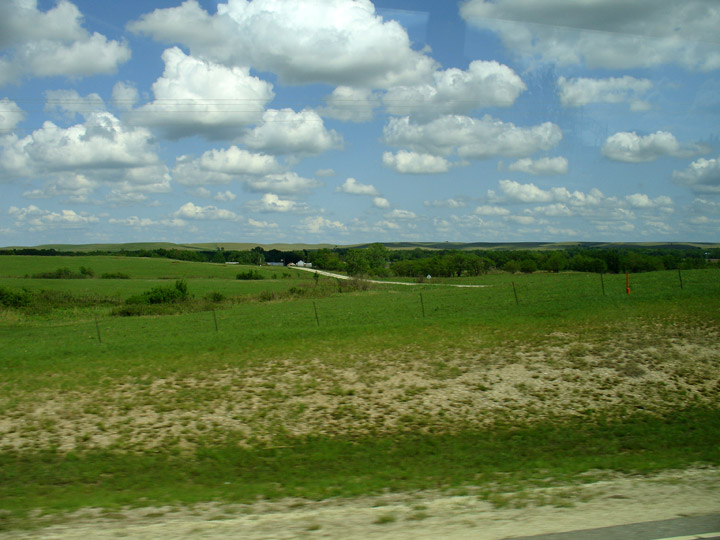
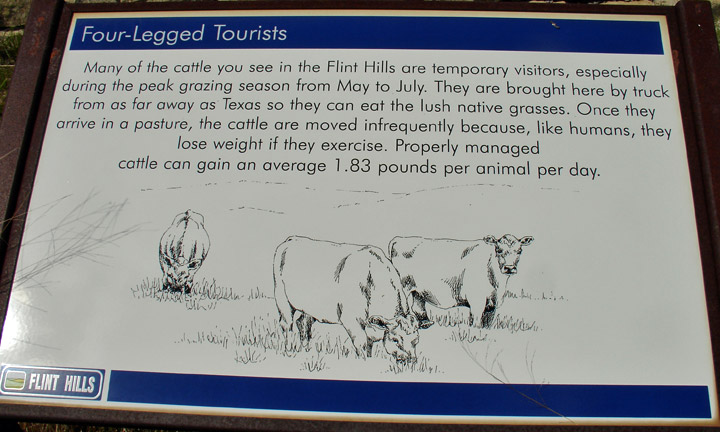
Today across North America less than 4 percent remains of the original extent of
tallgrass prairie, and the Flint Hills is by far its largest, most intact
landscape. The hills’ rocky terrain favored grazing over farming, an
agricultural reality that left large swaths of prairie unplowed. Today invasive
plants and residential and commercial development assault the last stand of the
tallgrass.

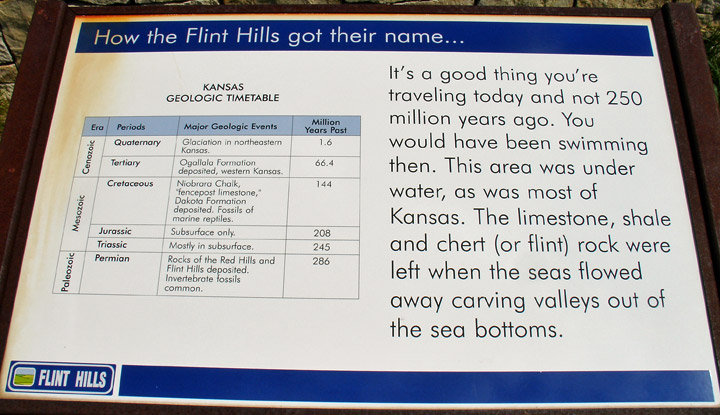
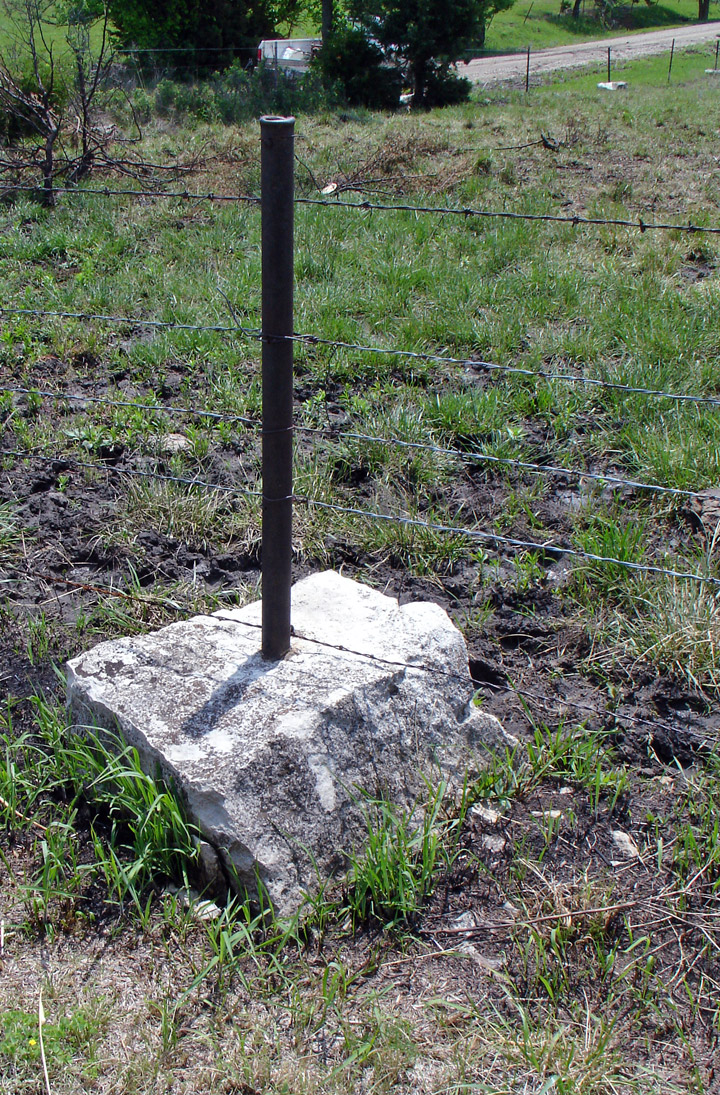
due to the difficulty in making holes for fencing posts
posts were often mounted in blocks of limestone
(called Chapman construction, after the man who patented the idea)

a fence row using some Chapman construction posts
The Nature Conservancy initiated a community-based conservation program called
the Flint Hills Initiative. The programs’ major goal is to maintain the
unfragmented nature of the region. The purpose of the initiative is to keep
ranchers on their lands by protecting them from encroaching development. In this
way, the Conservancy will safeguard important wildlife habitats as well as the
region’s ranching heritage.
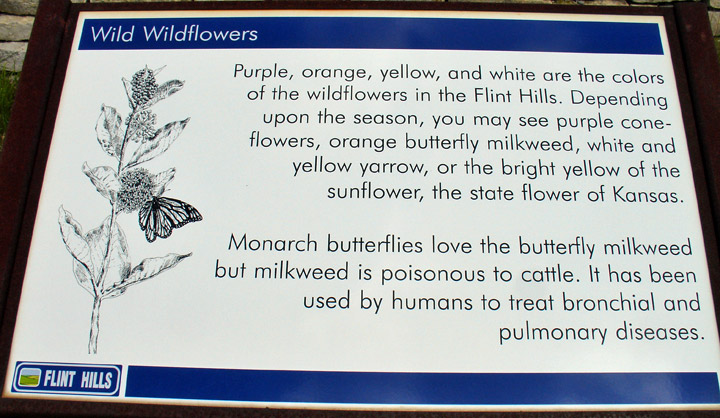
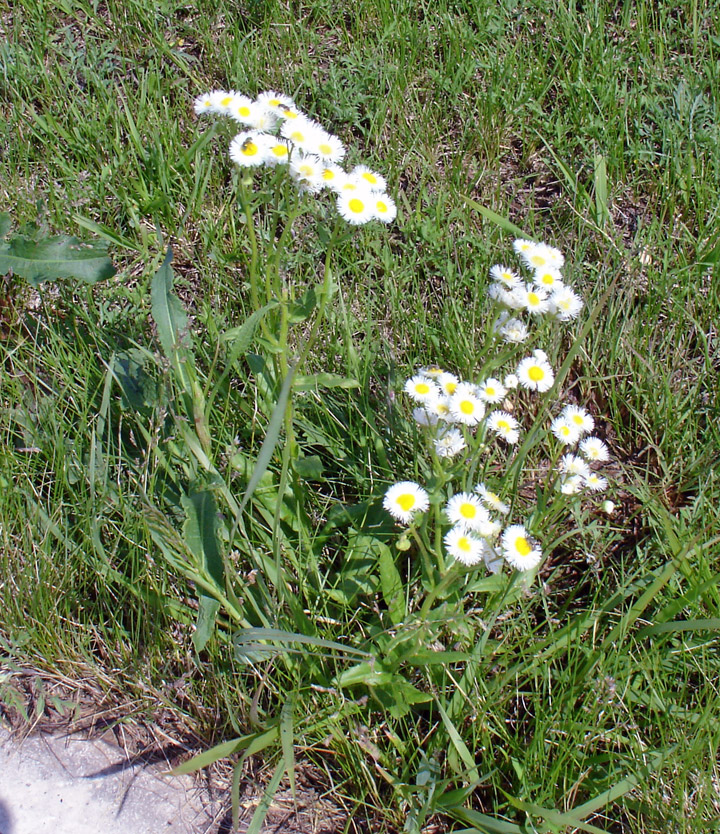
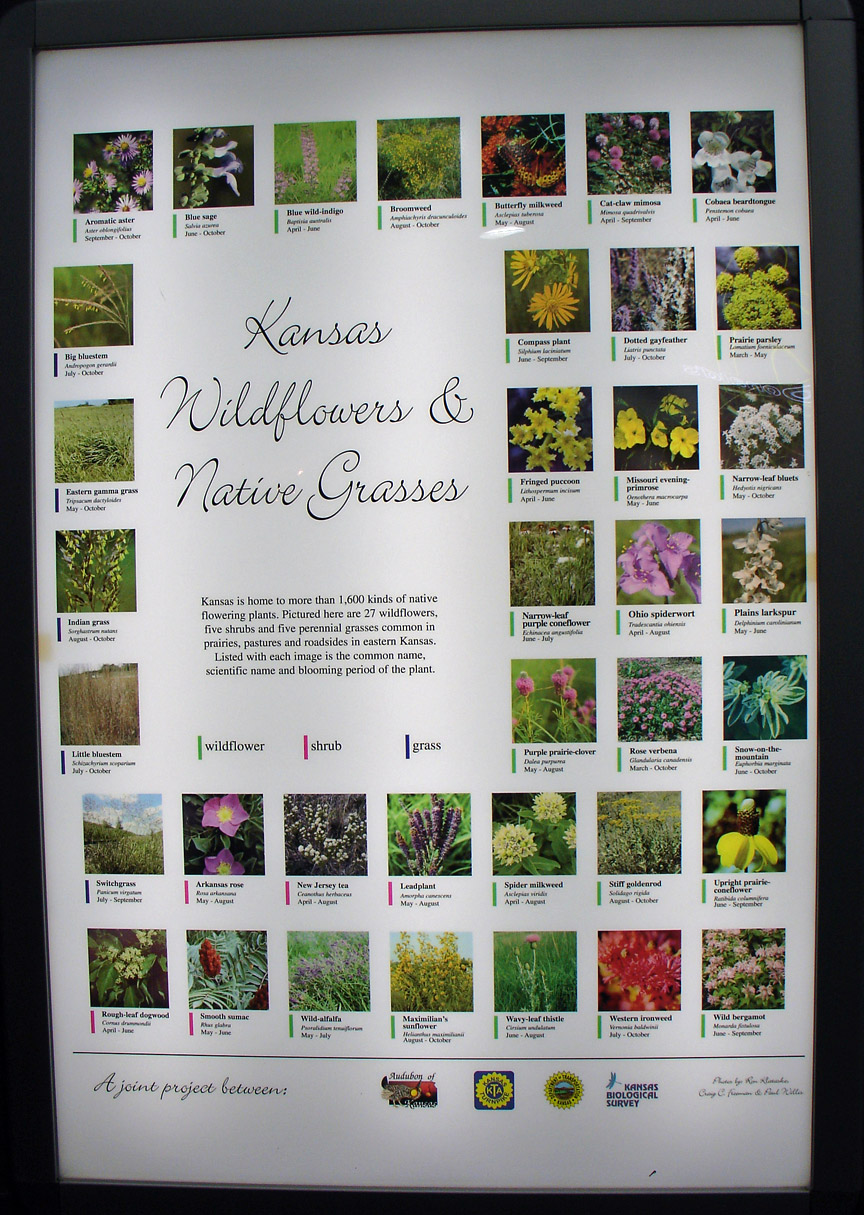
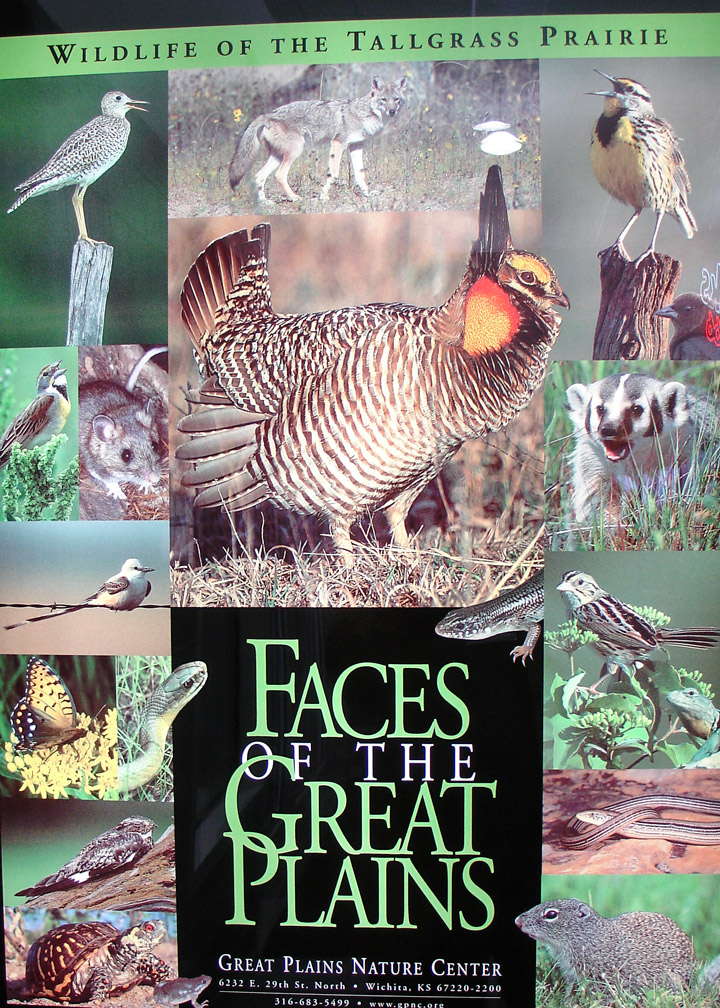
Kanza Indians
Quietly, the Kanza are coming home. Last year, the Kaw Nation - the official name of the Kanza - purchased 170 acres four miles southeast of Council Grove in hopes of turning the land into a heritage park. They’ve also opened a child-care center and a wellness center in Newkirk, Okla.., that’s benefiting some south-central Kansans. But it is the land of which they are proudest. It symbolizes more than just a real-estate transaction.
The purchase comes 127 years after the Kanza tribe was forcibly removed from the state by the federal government and moved into Oklahoma territory. The land is in the center of the last reservation that the Kanza had in Kansas.
Kanza translates roughly as ‘The Wind People,” or “People of the South Wmd.” It
is the Kanza tribe for whom the state of Kansas
is named. Tribal members are in the process of trying to get their new land
listed on the National Register of Historic Places. They want to turn it into a
heritage park, a place where people can go to learn more about the Kanza. It was
on this land that the federal government tried civilizing the tribe by building
138 huts. Some of those l9th-centwy huts, such as the stone cabin built for
Chief Wah-Shun-Gah in l862 and in which the Kanza chose to let their horses
live, are still standing.

A memorial to the Kaw Indians on their purchased land
“We are very happy,” said Clyde McCauley, vice chairman of the Kaw Nation as well as the nation’s budget officer and director of grants and contracts. “Kansas was once our territory — everything there down to Wichita was ours.”
The history of the Kanza
Known as the Konza, Kanza or Kansa, the Kaw originally lived in the Ohio River Valley. By the early 1800s, they had moved to what is now the Kansas, or Kaw, river valley to claim a territory that covered roughly two-fifths of modern-day Kansas and parts of Nebraska and Missouri. In 1825, the federal government began chipping away at Kaw land holdings, in part to make room for the relocation of other tribes from the east. Their territory was gradually reduced to about 2 million acres in a band stretching west from near Topeka.
In the old days, the Kaw built lodge villages east of modern-day Manhattan. They gardened and farmed maize in small plots, and they set out twice yearly to hunt buffalo. But the government kept crowding the Kaws and pushed the tribe farther south in 1846 to a 250,000-acre reservation in the Neosho River valley, near what is now Council Grove. Settlement pressures forced another move in 1873, when Congress passed an act requiring the Kaws to sell their lands in Kansas and move south to a 100,000-acre reservation on the Arkansas River in Oklahoma’s Indian Territory.
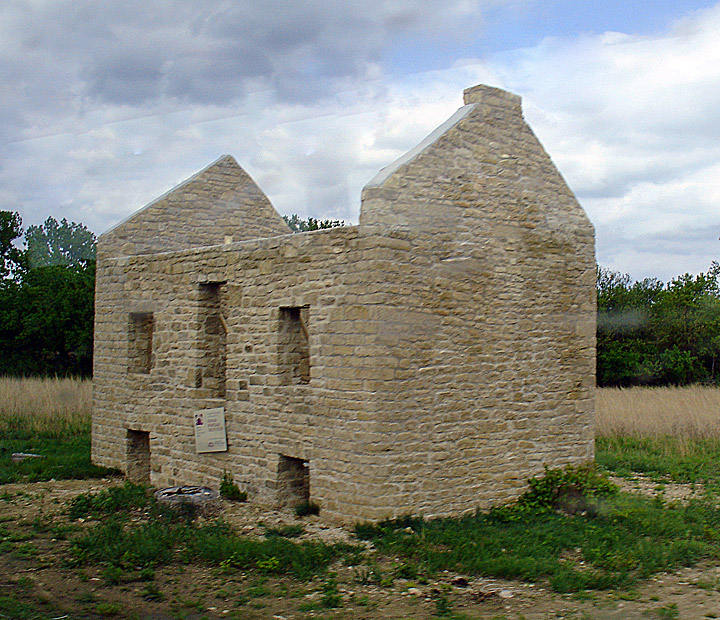
partially restored Indian Agent Office
By 1902, U.S. Rep. Charles Curtis of Kansas, a mixed-blood Kaw who later became a senator and then vice president under Herbert Hoover, initiated an act that carved the Oklahoma reservation into separate tracts for each member of the tribe. Many later lost or sold their land.
With each generation more or the
tribe's culture was lost. The tribe numbered about 1,600 in its early days in
Kansas, but by the time of the move to Oklahoma had dropped to about 500. Today,
the Kaw Nation has more than 2,300 members, all over the United States.
The land is a symbol for what once was — and the beginnings for what the future
can be. “The main reason we wanted to do this was to re-establish a presence in
Kansas,” said Wanda Stone, chairwoman of the Kaw Nation. “A lot of people
don’t even know that we were ever there — but Kansas, that’s where our home was.
And since the state of Kansas is named after our tribe, it should mean something
to all people that we are there.”

at Council Grove, Ron Parks tells of the Kaw Indians
Welcoming the Kanza back to Kansas is something that has been important to the people of Council Grove. “We live where they lived,” said Ron Parks, curator of the Kaw Mission State Historic Site, who is non-Indian. “We are Kansans. If there is any meaning to be derived from a sense of place, any understanding of who was here before and what it has meant to people —we need to start with the story of the first Kansans,”’ Parks said. ~To understand that enriches our identity as Kansans.”
Rectifying the past
The move of the Kanza back to Kansas has meant coming to terms with the cultural conflicts of the past This year also marks the 150th anniversary of the federal government combining forces with a church to educate the Kanza. In 1851, the federal government and the Methodist Episcopal Church South — a denomination that believed in slavery — established a partnership at Council Grove. Parks said the partnership was beneficial to the government and the church. "The government agreed to provide the funding and use it as leverage over the Kaws,” he said. ‘The church agreed to Christianize and educate the Kaws. ‘They targeted the youth, people they felt would be most receptive and malleable to new cultural influences. The hope would be that these youth would then be assimilated in the Euro-American culture — be educated, Christian farmers — and that in turn, would resolve the ‘Indian problem.’”
The “Indian problem” was the rising number of conflicts over land between Native
American tribes and increasing numbers of settlers.
“Kaw people were friendly to the settlers,” said McCauley, the Kaw Nation’s vice
chainman. “In our history, no Kaw killed a white man. We were always very
friendly.”
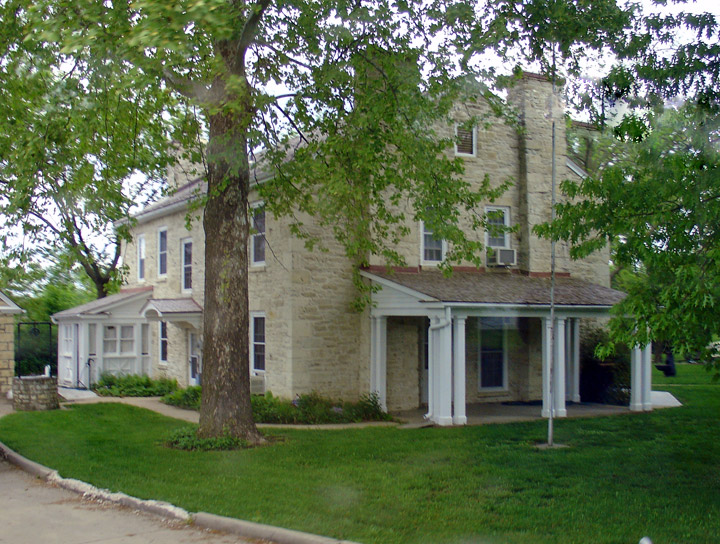
Kaw Mission
The Kaw mission only lasted three
years before the government funding was cut because the cost —$50 a student
annually— was considered exorbitant. As the Kanza begin to comeback into Kansas,
McCauley said it is their intention to reclaim not only some of their most
spiritual and sacred sites but provide community services. A child-care center
in Newkirk is open to any child within the area, and the wellness center in
town, established by the Kanza, is also open to community residents. Both were
established with federal matching grant funds for the tribe. Plans include
another park in Overland Park and a child-care health clinic for south-central
Kansas.
“We are real interested in our Kansas heritage,” McCauley said.
“We aren’t trying to move anybody out, but we do plan on making a significant
presence in Kansas.”
Text by Beccy Tanner